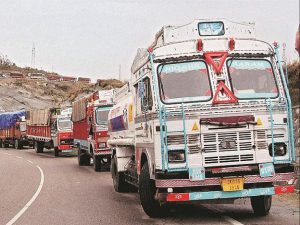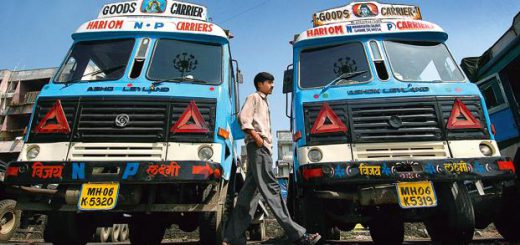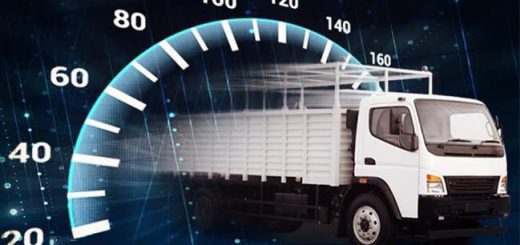Cost-effective, clean, and optimised freight transport system key for India’s growth

Cost-effective, clean, and optimised freight transport system key for India’s growth: Report
Transferring freight to rail and optimising truck use, India can attain its aim to cut back logistics price from 14% of GDP to 10% by 2022 and this could save as much as Rs 10 lakh crore in 2022, a report by authorities suppose tank Niti Aayog mentioned on Thursday.
“Improved rail mode share, elevated logistics effectivity and clear automobiles are the constructing blocks for a transformative freight paradigm that’s inside India’s attain. This freight paradigm will likely be cost-effective with lowered transport prices, clear with extra environment friendly and electrical automobiles, and optimised with improved mode share and operational effectivity. Implementing multi-stakeholder collaboration in a phased method is vital to this transformation,” mentioned the Niti Aayog and RNI report titled Quick Monitoring Freight in India.
As nationwide freight exercise grows about five-fold by 2050, India’s freight transport ecosystem has a vital position to play in supporting India’s formidable priorities which embody international competitiveness, job progress, city and rural livelihoods, and clear air and atmosphere.
It is known for growing the share of rail transport, optimising truck use, selling use of fuel-efficient automobiles and various fuels.
The report mentioned this technique will result in lowered logistics prices, lowered carbon emissions and improved air high quality and fewer truck site visitors on roads. India can save 10 giga tonnes of CO2, 500 kilo tonnes of particulate matter (PM) and 15 million tonnes of nitrogen oxide (NOx ) brought on by freight transport by 2050 whereas improved mode share and environment friendly logistics can cut back the vehicular-freight exercise by 48 p.c in 2050 over a enterprise as common situation.
To extend the mode share of rail transport, India can Enhance the rail community capability and lift the share of intermodal transportation.
It beneficial bettering current community infrastructure by growing axle masses, growing practice size, and enabling trains to maneuver sooner, including new community capability by growing specialised heavy-haul corridors and devoted freight corridors and figuring out and upgrading corridors with excessive potential for intermodal transport and guaranteeing higher modal integration throughout rail, street, and water.
The report mentioned that rail’s share in freight transportation in India has been declining since 1951. In 2020, it stood at merely 18% as in comparison with street’s share of 71%.
“This is because of inadequate rail capability, particularly on sure high-density routes. A number of elements counsel that rail may very well be an economical and environment friendly various for a big share of India’s freight,” it mentioned.
To optimise truck use, India can enhance transportation practices and warehousing practices and beneficial a number of options to realize the target. It known as for bettering load matching utilizing digital platforms and get freight on the appropriate sort of truck, relying on the use case.
Maximise car productiveness by means of environment friendly packaging and loading and bettering the siting of warehouses utilizing the rules of optimised community design. It beneficial bettering the efficiency of warehouses by implementing superior digitised instruments.
To advertise clear, fuel-efficient car applied sciences reminiscent of electrical automobiles (EVs), India can prioritise bettering gas economic system and cut back inside combustion engine automobiles’ emissions, the report mentioned.
It additionally backed use EVs and cleaner fuels “The next actions can help the deployment of those options:
• Improve gas consumption and emissions requirements of ICE automobiles
• Promote collaboration throughout trade gamers to share experiences with know-how options
• Implement supportive insurance policies and pilot tasks to deploy EVs and charging infrastructure
• Manufacture high-quality electrical automobiles and create a sturdy charging infrastructure community,” the report mentioned.
The logistics sector accounts for five% of the nation’s GDP and employs 2.2 crore individuals.
India handles 4.6 billion tonnes of products annually, amounting to a complete annual price of Rs 9.5 lakh crore.³ These items characterize quite a lot of home industries and merchandise: 22% are agricultural items, 39% are mining merchandise, and 39% are manufacturing-related commodities.
Vehicles and different automobiles deal with a lot of the motion of those items. Railways, coastal and inland waterways, pipelines, and airways account for the remaining, the report added.
“Improved rail mode share, elevated logistics effectivity and clear automobiles are the constructing blocks for a transformative freight paradigm that’s inside India’s attain. This freight paradigm will likely be cost-effective with lowered transport prices, clear with extra environment friendly and electrical automobiles, and optimised with improved mode share and operational effectivity. Implementing multi-stakeholder collaboration in a phased method is vital to this transformation,” mentioned the Niti Aayog and RNI report titled Quick Monitoring Freight in India.
As nationwide freight exercise grows about five-fold by 2050, India’s freight transport ecosystem has a vital position to play in supporting India’s formidable priorities which embody international competitiveness, job progress, city and rural livelihoods, and clear air and atmosphere.
It is known for growing the share of rail transport, optimising truck use, selling use of fuel-efficient automobiles and various fuels.
The report mentioned this technique will result in lowered logistics prices, lowered carbon emissions and improved air high quality and fewer truck site visitors on roads. India can save 10 giga tonnes of CO2, 500 kilo tonnes of particulate matter (PM) and 15 million tonnes of nitrogen oxide (NOx ) brought on by freight transport by 2050 whereas improved mode share and environment friendly logistics can cut back the vehicular-freight exercise by 48 p.c in 2050 over a enterprise as common situation.
To extend the mode share of rail transport, India can Enhance the rail community capability and lift the share of intermodal transportation.
It beneficial bettering current community infrastructure by growing axle masses, growing practice size, and enabling trains to maneuver sooner, including new community capability by growing specialised heavy-haul corridors and devoted freight corridors and figuring out and upgrading corridors with excessive potential for intermodal transport and guaranteeing higher modal integration throughout rail, street, and water.
The report mentioned that rail’s share in freight transportation in India has been declining since 1951. In 2020, it stood at merely 18% as in comparison with street’s share of 71%.
“This is because of inadequate rail capability, particularly on sure high-density routes. A number of elements counsel that rail may very well be an economical and environment friendly various for a big share of India’s freight,” it mentioned.
To optimise truck use, India can enhance transportation practices and warehousing practices and beneficial a number of options to realize the target. It known as for bettering load matching utilizing digital platforms and get freight on the appropriate sort of truck, relying on the use case.
Maximise car productiveness by means of environment friendly packaging and loading and bettering the siting of warehouses utilizing the rules of optimised community design. It beneficial bettering the efficiency of warehouses by implementing superior digitised instruments.
To advertise clear, fuel-efficient car applied sciences reminiscent of electrical automobiles (EVs), India can prioritise bettering gas economic system and cut back inside combustion engine automobiles’ emissions, the report mentioned.
It additionally backed use EVs and cleaner fuels “The next actions can help the deployment of those options:
• Improve gas consumption and emissions requirements of ICE automobiles
• Promote collaboration throughout trade gamers to share experiences with know-how options
• Implement supportive insurance policies and pilot tasks to deploy EVs and charging infrastructure
• Manufacture high-quality electrical automobiles and create a sturdy charging infrastructure community,” the report mentioned.
The logistics sector accounts for five% of the nation’s GDP and employs 2.2 crore individuals.
India handles 4.6 billion tonnes of products annually, amounting to a complete annual price of Rs 9.5 lakh crore.³ These items characterize quite a lot of home industries and merchandise: 22% are agricultural items, 39% are mining merchandise, and 39% are manufacturing-related commodities.
Vehicles and different automobiles deal with a lot of the motion of those items. Railways, coastal and inland waterways, pipelines, and airways account for the remaining, the report added.
source: https://timesofindia.indiatimes.com/




Recent Comments